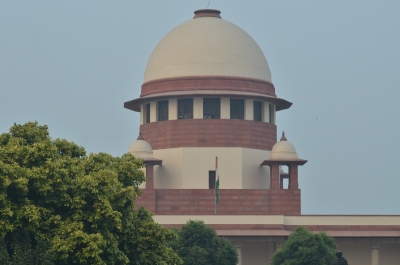New Delhi, March 9 : The Supreme Court on Tuesday sought reply from the Centre in connection with the appointment of an environmental regulator for green clearances, despite the directions issued by it in 2011.
Advocate Prashant Bhushan submitted that all environmental clearances have become farce in the absence of an independent oversight. Bhushan pointed out that in 2011, (in the Lafarge mining case), the top court had directed the setting up of a national environment regulator, which could ensure an independent oversight on green clearances given for various projects.
After hearing these submissions, a bench of Chief Justice S.A. Bobde and Justices A.S. Bopanna and V. Ramasubramanian asked the Centre to file its reply in the matter.
The top court also a issued notice to the Centre on a plea by Bhushan, seeking quashing of a notification, which said there would be no need for the environmental clearance for road projects of up to 100 km length.
As Bhushan insisted that environmental clearances are farce, the Chief Justice replied that on Monday there was a matter in which the court learnt that the Wildlife Board of India has not met for six years. Bhushan said that even he had heard about this.
Concluding the hearing, the bench said that Bhushan’s petition will be listed with the matter challenging the non-functioning of the Wildlife Board. The bench has posted that matter for further hearing after two weeks, besides seeking the Centre’s reply on the appointment of an environmental regulator.
The observation from the top court came during the hearing of a petition by the Association for Protection of Democratic Rights (APDR), challenging the felling of hundreds of trees for the construction of a railway overbridge project in West Bengal.
During the course of hearing, the top court also directed the Centre, the West Bengal government and the petitioner to deliberate on the names of the experts, who could be appointed on the expert panel for fixing the criteria on felling of trees for projects, which includes assessing the overall value of the trees.
The top court had suggested including environmentalist Ranjeet Singh, who had drafted the Wildlife Protection Act, in a committee.
On February 18, the Supreme Court had said that it is essential to develop a policy focusing on gradation of trees: A category of trees which can be cut down and the other category of trees which requires protection throughout its lifespan.
The top court had said, “We want to lay some guidelines, a kind of cognitive pathway so that thinking takes place along those line. The cost of the project to include the value of the trees, or their contribution to the environment. Trees of a certain type and certain age shall never be cut down.”
Disclaimer: This story is auto-generated from IANS service.

